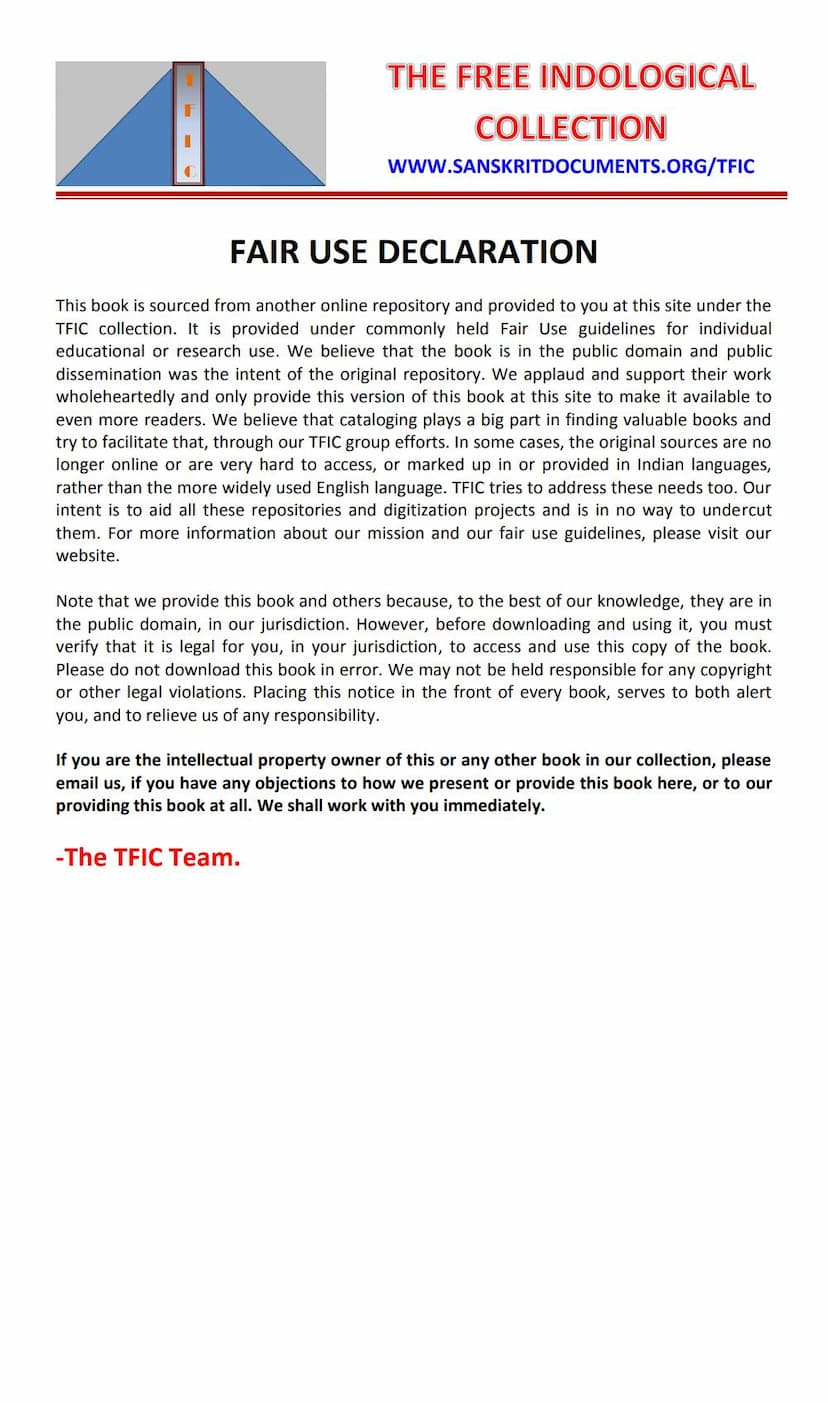Jain Tattvasara
Added to library: September 2, 2025

Summary
Based on the provided text, here's a comprehensive summary of "Jain Tattvasara," focusing on its philosophical and spiritual content:
Book Title: Jain Tattvasara Author(s): Atmanandji Jain Sabha Bhavnagar Publisher: Atmanand Jain Sabha Catalog Link: https://jainqq.org/explore/010318/1
Overall Purpose: "Jain Tattvasara" is a foundational Jain text that aims to provide a comprehensive understanding of core Jain principles and teachings. It acts as a guide for spiritual seekers to comprehend the nature of the soul, karma, liberation, and the path to achieve it. The book emphasizes the importance of self-knowledge, ethical conduct, and spiritual discipline for liberation from the cycle of birth and death.
Key Concepts and Themes:
-
Nature of the Soul (Ātmā):
- The soul is described as eternal, all-pervading (vibhuh), conscious (chetanavān), and formless (arūpī).
- While inherently eternal, its perceived impermanence is due to the transformations (paryāyā) caused by karma.
- The soul possesses inherent qualities like infinite knowledge, perception, bliss, and energy, but these are obscured by karmic coverings.
-
Nature of Karma:
- Karma is defined as non-conscious (jaḍa), material (rūpī), and composed of subtle matter (pudgal).
- Karmas are described as originating from the cycle of birth and death and being in a perpetual state of coming and going.
- They are further elaborated as being infinitely numerous and pervading the entire universe.
- Crucially, karmas are intrinsically associated with the soul from an eternal beginning (anādi-siddha), like gold in ore or fire within the sunstone.
- Despite being material, karmas bind the formless soul due to a combination of the soul's nature, the inherent power of karmic matter, temporal influences, and destiny.
- The text explores how souls, despite being formless, accumulate and experience material karmas, drawing analogies like the mind perceiving sounds without ears or the soul experiencing actions without physical organs.
-
The Soul's Journey and Liberation:
- The soul's entanglement in the cycle of existence (saṃsāra) is due to its continued interaction with karma, driven by passions (kaṣāya) like anger, pride, deceit, and greed, and attachment to sensory pleasures (viṣaya).
- The path to liberation (mokṣa) involves understanding the true nature of the soul (ātma-bodha) and dissociating from non-soul (anātmā) elements.
- Liberation is achieved not merely through knowledge but also through virtuous conduct (cāritra) and spiritual practice.
- The text emphasizes that the ultimate cause of bondage and liberation lies in the state of the mind and senses. Mind control (mana-nirodha) is presented as the key to spiritual progress and liberation.
-
The Role of Spiritual Teachers and Scriptures:
- The text highlights the importance of understanding the teachings of spiritual leaders and the scriptures to achieve self-realization.
- It acknowledges various philosophical schools and their differing views on creation and the divine, but ultimately points towards the Jain path of self-effort and spiritual purification as the means to liberation.
- The book itself is presented as a treatise on spiritual knowledge, aimed at dispelling ignorance and guiding individuals towards the truth.
-
Rejection of External Deities as Sole Means to Liberation:
- A significant portion of the text critiques the idea that liberation can be attained solely through the worship of external deities or idols, especially if they are seen as performing actions or having limitations similar to humans.
- It argues that true liberation comes from understanding the soul's inherent nature and purifying it from karmic impurities, which is an internal process.
- While acknowledging the potential for initial spiritual progress through devotion and symbolism (like idol worship or devotion to religious figures), the text stresses that the ultimate goal is self-realization and the eradication of karma, which is an internal endeavor.
-
Critique of Naastika (Atheistic/Materialistic) Views:
- The text engages with materialistic viewpoints that prioritize only perceived reality (pratyakṣa) and deny the existence of non-perceived realities like karma, past lives, heaven, hell, or liberation.
- It systematically refutes these views by demonstrating the limitations of sensory perception and the necessity of inference and scripture (āptavāk) for understanding ultimate truths.
- Analogies are used to show how even mundane phenomena have underlying causes or qualities that are not directly perceptible but are accepted through other means.
-
The Nature of Ultimate Reality (Brahman/Paramātmā):
- The text discusses the concept of "Brahman" or "Paramātmā" often found in other Indian philosophical traditions.
- It interprets these concepts in the context of Jainism, equating them with the pure, liberated soul (Siddha) which is devoid of all karmic matter, possesses infinite consciousness, and resides in a state of eternal bliss.
- The critique of a creator deity is presented by questioning how an unchangeable, perfect entity could create an imperfect, suffering world. Jainism posits an eternal universe without a beginning or end, governed by natural laws (like karma and time) rather than a divine creator.
-
The Importance of Inner Purity and Self-Effort:
- The book strongly advocates for self-effort and the cultivation of inner virtues. The path to liberation is internal, requiring the purification of the soul from its accumulated karmic defilements.
- The text emphasizes that true spiritual progress comes from understanding oneself, conquering desires and passions, and living an ethical life based on non-violence (ahiṃsā), truthfulness (satya), non-stealing (asteya), chastity (brahmacarya), and non-possession (aparigraha).
Structure and Presentation: The text is structured in a question-and-answer format (prashnottara) covering various philosophical points. It uses numerous analogies and examples from everyday life, nature, and even other philosophical traditions to explain complex Jain doctrines in a comprehensible manner. The "Upoḍghāta" (Preface/Introduction) by Muni Kanti Vijaya and the introductory notes by Vaidyaraj Maganalal bhai Chunilal provide context and acknowledge the patrons. The inclusion of a detailed index ("Anukramanika") further aids the reader in navigating the content.
In essence, "Jain Tattvasara" serves as a profound philosophical discourse aimed at illuminating the Jain path to liberation through self-understanding, ethical living, and the systematic removal of karmic obstructions, ultimately leading to the soul's inherent state of pure consciousness and bliss.